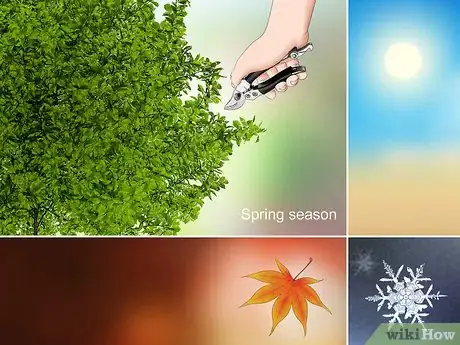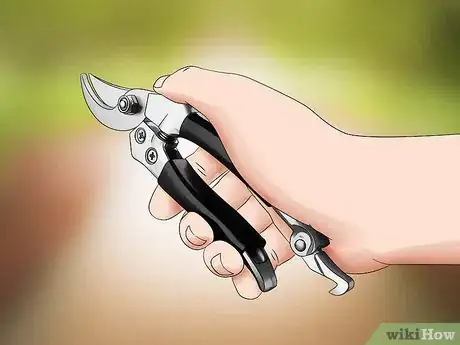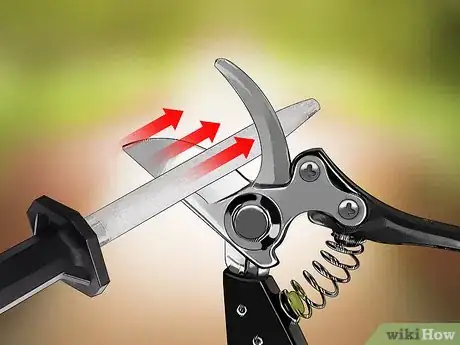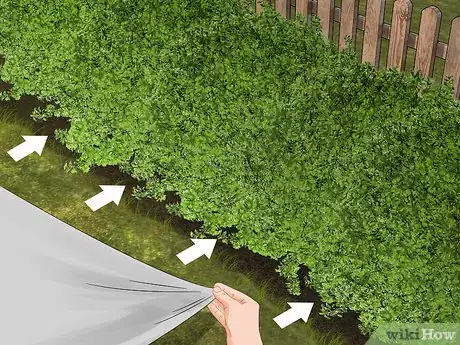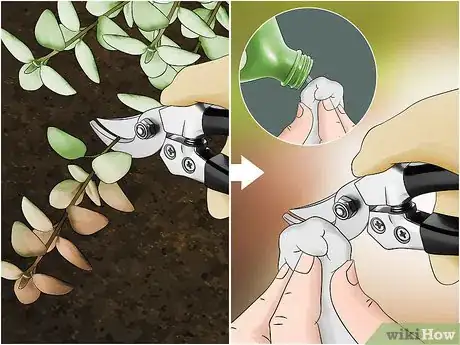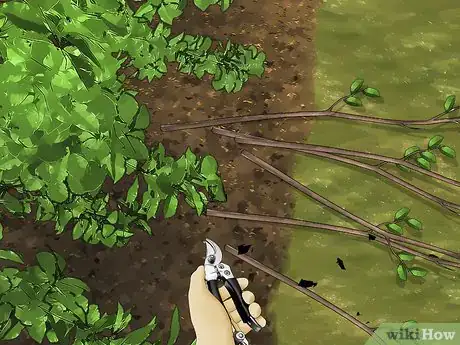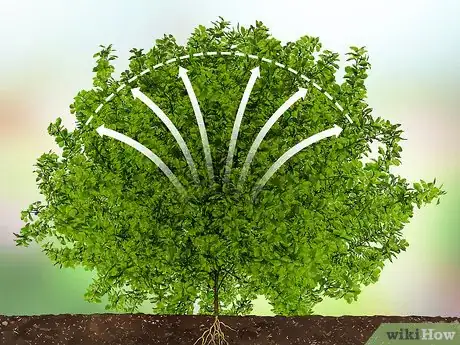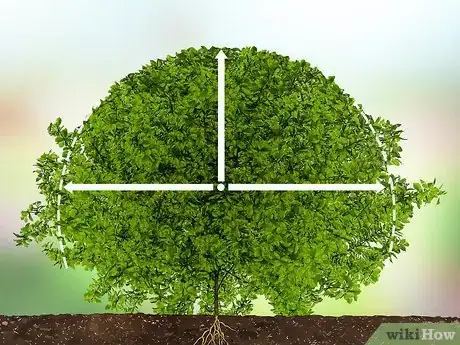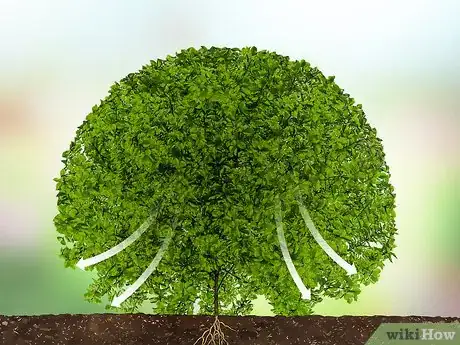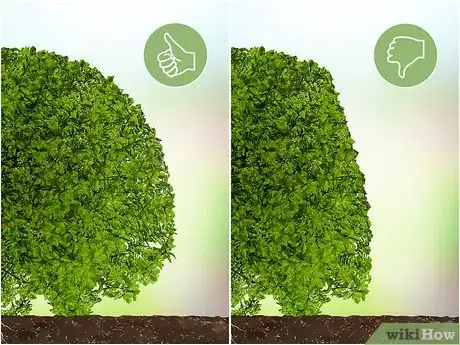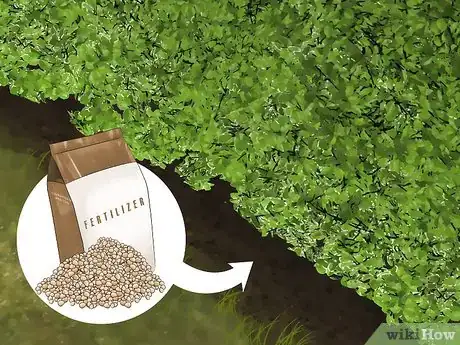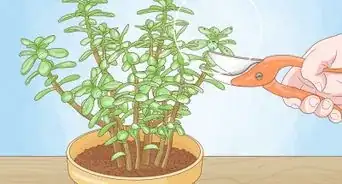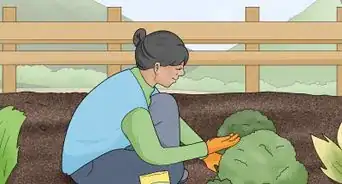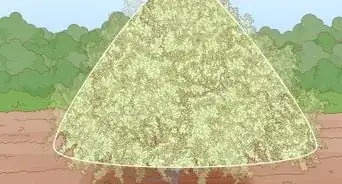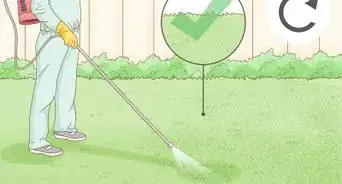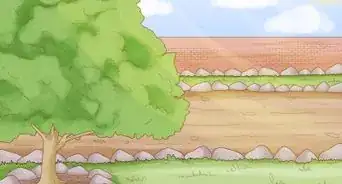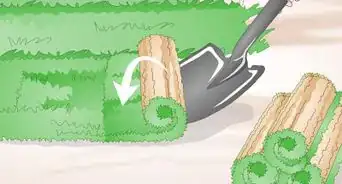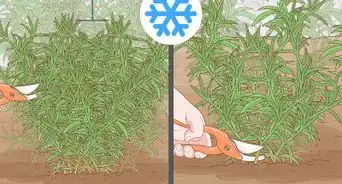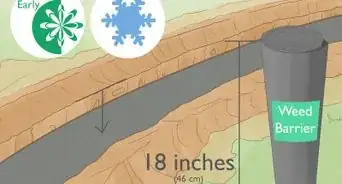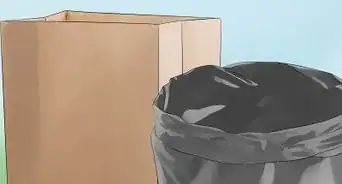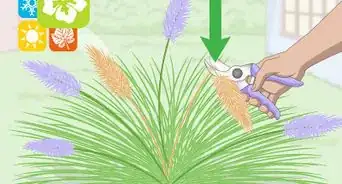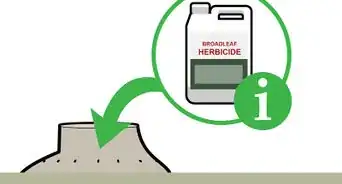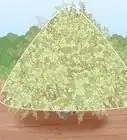This article was co-authored by Grant Wallace. Grant Wallace is a Landscaper and Owner of Grantlanta Lawn in Atlanta, Georgia. With over seven years of experience, he specializes in lawn maintenance and landscape installation. In 2012, he earned his BA from the University of West Georgia. Grant has been profiled in Shoutout Atlanta, Canvas Rebel, and Voyage ATL.
This article has been viewed 46,708 times.
Evergreen bushes are beautiful, keep their color all year, and are relatively easy to take care of. However, you do need to make sure you trim them at least once a year. Take some small hand pruners, cut back 1 branch at a time, and try to keep the natural shape of the bush. When you’re done, your bushes will look as good as ever!
Steps
Preparing Your Work Area
-
1Prune in the spring. The best time of year to trim evergreen bushes is before new growth occurs. Early spring is usually most convenient, but you can also trim the bushes in late winter if it’s not too cold for working outside.[1]
-
2Choose hand pruners instead of larger shears. Some people are tempted to use large shears to trim evergreens, but this does not usually lead to the best results. Small hand pruners enable you to tend to specific areas better and keep the natural shape of the plant. Using large shears generally makes people cut off more than they should.[2]Advertisement
-
3Sharpen your pruners if necessary. Dull pruners can make the process take longer, and they can lead to ugly, uneven cuts. Secure the pruners into a vise. Then, run a file along the blade of the pruners until the edge becomes sharper and more defined. Wipe the shears down with linseed oil when you’re done to help prevent rust.[3]
-
4Lay down a tarp around the bushes for easy clean up. By catching your clippings with a tarp, you’ll be able to easily gather them together at the end. Alternatively, work with a bag next to you at all times, so you can simply discard your clippings into the bag as you work. You can purchase bags specifically made for disposing of yard waste from any home improvement store.
-
5Put on gardening gloves. Purchase gloves specifically designed for gardening at any gardening or home improvement store. These protect your hands and keep them relatively clean while you work.
Removing Old Growth
-
1Cut off any damaged or dead branches. Any branches that are discolored, bare, or limp need to be removed. Take the branch in 1 hand and use your other hand to cut it off at the base of the stem with your pruners. If the base of a stem is particularly thick or tough, try using larger shears or a small hacksaw.[4]
- Wipe down the blade of your pruners with rubbing alcohol after you cut off a diseased branch. This will help prevent the disease from spreading to other branches.
-
2Shorten overly long branches. Some branches of the bush will most likely have grown quite a bit longer than the others. Use the pruners to trim these back significantly, so that they’re closer to the size of the adjacent branches. Once all the overly long branches have been trimmed, you should be able to see the natural shape of the plant more clearly.[5]
-
3Remove one third of the old wood at the ground level. There will probably be some areas that look overcrowded with branches, especially near the bottom of the bush. By removing about one third of this wood, you’ll give your bush a cleaner look. This also makes room for new branches to grow in.[6]
Shaping the Bush
-
1Start at the top and work your way down. In general, this will help you to shape the bush properly. Branches at the top should be shorter than branches at the bottom. If you start at the bottom, you might accidentally make those branches shorter than they should be. When you’re done, the bush should appear wider at the bottom than it does at the top.
-
2Trim all the branches on the top to roughly the same length. However, don’t focus on making them all exactly the same size. To keep the natural shape of the plant, allow some variation between the branches.[7]
-
3Cut the branches in the middle so that they're longer than those on top. To make sure your plant gradually flares out towards the bottom, leave the branches in the middle slightly longer than the branches on top.[8]
-
4Leave the branches on the bottom longer than the others. Evergreen bushes should taper towards the top and flare out at the bottom. As you move down the bush, allow the branches in each section to be slightly longer than the branches above them. When you’re done, the bottom of the bush should appear wider than the top. The shape should be somewhat like a cone or a trapezoid.[9]
-
5Avoid cutting the bushes so that their sides look flat. In most cases, evergreens should have a natural shape rather than a flat or geometric one. Never try to cut all branches so that they’re the same length. This is why small hand pruners are more effective than larger shears.[10]
-
6Fertilize your bushes after pruning. Now that you’ve cleared the old branches and shaped the bush, help the plant grow by adding some fertilizer to the soil around its base. Use a fertilizer that is rich in nitrogen, phosphorus, and potassium. Purchase fertilizer at your local gardening store or home improvement store.[11]
Expert Q&A
Did you know you can get expert answers for this article?
Unlock expert answers by supporting wikiHow
-
QuestionWhen can I cut back evergreen shrubs?
 Maggie MoranMaggie Moran is a Professional Gardener in Pennsylvania.
Maggie MoranMaggie Moran is a Professional Gardener in Pennsylvania.
Home & Garden Specialist
-
QuestionHow do you trim a shrub?
 Maggie MoranMaggie Moran is a Professional Gardener in Pennsylvania.
Maggie MoranMaggie Moran is a Professional Gardener in Pennsylvania.
Home & Garden Specialist
-
QuestionCan you trim shrubs in the summer?
 Maggie MoranMaggie Moran is a Professional Gardener in Pennsylvania.
Maggie MoranMaggie Moran is a Professional Gardener in Pennsylvania.
Home & Garden Specialist
Expert Interview
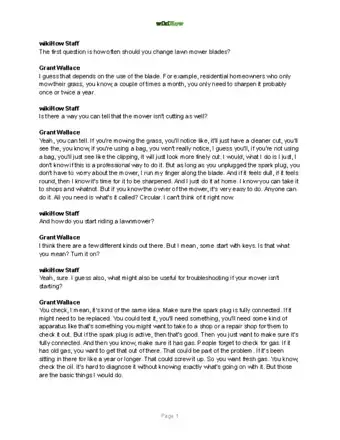
Thanks for reading our article! If you'd like to learn more about trimming evergreen bushes, check out our in-depth interview with Grant Wallace.
References
- ↑ http://www.mortonarb.org/trees-plants/tree-and-plant-advice/horticulture-care/pruning-evergreens
- ↑ https://youtu.be/J-iHqlqfqUw?t=64
- ↑ http://msue.anr.msu.edu/news/pruning_evergreen_shrubs
- ↑ https://www.rhs.org.uk/advice/profile?PID=168
- ↑ https://www.rhs.org.uk/advice/profile?PID=168
- ↑ https://www.rhs.org.uk/advice/profile?PID=168
- ↑ http://www.mortonarb.org/trees-plants/tree-and-plant-advice/horticulture-care/pruning-evergreens
- ↑ http://www.mortonarb.org/trees-plants/tree-and-plant-advice/horticulture-care/pruning-evergreens
- ↑ http://msue.anr.msu.edu/news/pruning_evergreen_shrubs
About This Article
Evergreen bushes make a beautiful addition to any yard, and trimming them properly will keep them looking great year-round. Use small, hand pruners rather than large shears, since this will allow you to keep the natural shape of the plant. Start by cutting off any damaged or dead branches at the base of the stem. You should also shorten any overly long branches. To shape the bush, start at the top and work your way down. In general, the branches at the top should be shorter than the ones at the bottom, and the middle branches should be longest. This will ensure your bush keeps its rounded shape. To learn how to make cleanup easier while trimming, read on!
